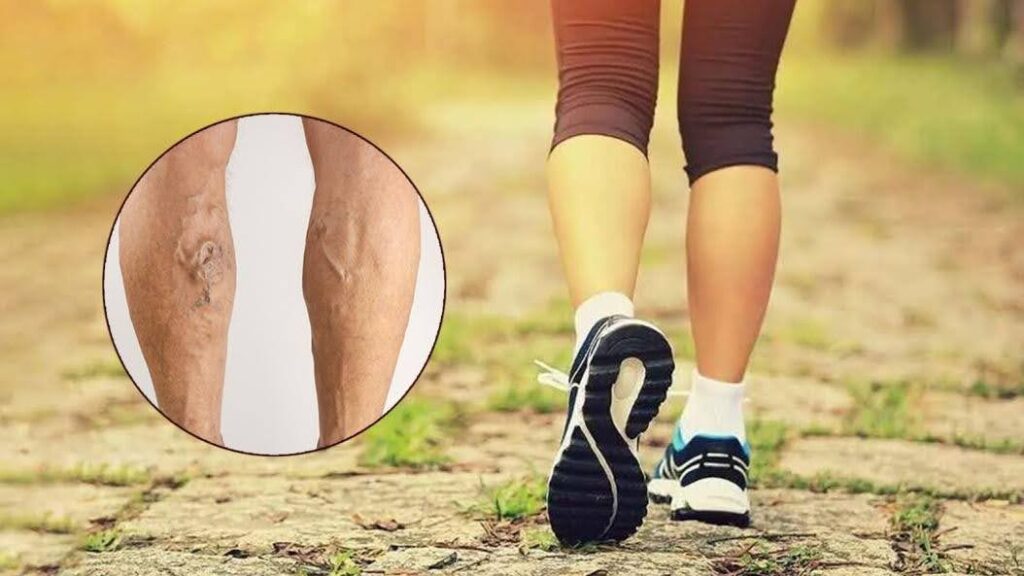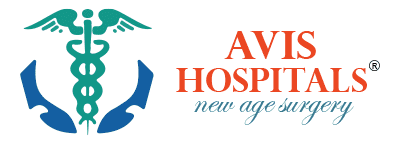- Avis Hospitals
- No Comments
Walking is regarded as one of the best exercises for maintaining overall health, and it is considered one of the self-care medicines for sufferers of varicose veins. Walking offers much more than just helping you relieve the symptoms of varicose veins, like pain, swelling, and heaviness in your legs. People who are scared of laser procedures or surgeries to get rid of varicose veins feel that these noninvasive options, like walking, are safer and less intimidating. They look out for simple and natural ways to reduce the appearance and discomfort of varicose veins. The key question at the juncture is whether walking will help reverse varicose veins.

Varicose veins can impact your legs when vein valves collapse and fail to carry blood back to the heart from the lower extremities. The valves in healthy veins act as one-way doors to transport blood to the heart, functioning against gravity. When these vein valves collapse, they fail to prevent blood backflow and lead to the formation of spider veins and varicose veins.
The benefits of walking for vein health
Walking is one of the recommended exercises for varicose veins. It is also very accessible; you can start walking for a short while initially and increase it over time without using any special equipment. Here are a few benefits of walking for your varicose veins.
Helps you maintain a healthy weight
Obesity is one key contributor to varicose veins. Walking every day helps you burn excess calories and shed excess pounds, which puts more pressure on the damaged veins. Additional pressure due to obesity can make varicose veins chronic. Try to get into walking every day for at least 30 minutes to see effective results.
Improve circulation
Poor blood circulation is a key cause of varicose veins. Walking helps you improve the symptoms of varicose veins by addressing the underlying cause, poor blood circulation. Walking helps improve blood circulation in the lower extremities of the body, as well as overall blood circulation in the body. By walking, the calf muscles help the leg veins push the blood back to the heart against gravity. In addition to improving blood circulation in the legs, regular walking helps lower blood pressure in the veins and strengthens your heart.
Great for hormone control
Varicose veins can also be caused by stress hormones. Walking is an effective exercise to control the release of cortisol, a stress hormone that can impede the burning of calories in the heart. Lowering stress hormones is key because they can negatively impact blood circulation by constricting the blood vessels and increasing inflammation. Both can worsen the symptoms of varicose veins. Walking can relax leg veins and help you maintain good vascular tone. It is an effective way to release pressure and maintain mental health.
Reduce the strain on your legs
Varicose veins are caused by blood pooling in the veins, which enlarges them and makes them appear bulged on the skin’s surface. Excess pressure due to blood pooling can strain your veins. Walking can help the veins push up the accumulated blood and release the pressure and strain on your legs.
Prevents the formation of new varicose veins
Varicose veins are, of course, a recurring disease when there is no proper post-treatment care. Though many minimally invasive varicose vein treatments collapse the damaged veins, you must follow post-treatment advice to prevent the formation of new varicose veins. Walking is one low-impact exercise that helps boost blood circulation in the legs and prevents more stress on the veins. Lack of stress on your healthy veins prevents the formation of new veins.
Eases pain
Pain in the legs is the most common symptom of varicose veins. The debilitating pain in your legs due to varicose veins may limit your mobility, too. However, walking can help alleviate the muscle pain caused by varicose veins. Indulge in walking for 5-10 minutes every day initially and improve it gradually over time. It helps in pumping your blood faster. As your body gets used to motion over time, the pain caused by varicose veins fades away, and you can feel the difference.
Walking improves sleep quality
Individuals suffering from varicose veins complain about the quality of sleep due to muscle cramps and swelling in the legs. Exercises like walking can improve sleep quality by handling these symptoms. Quality sleep helps your body heal itself. It improves everything from cardiovascular health to mental well-being.
Can walking reverse varicose veins?
Reversing varicose veins means bringing your veins back to their previous health condition. Varicose veins reversal is not possible because the vein condition develops in the legs due to structural damage in the vein valves.
Prevents progression
Walking helps the calf muscles pump the blood upward in the legs towards the heart through veins. The calf activity relieves the pressure on the veins by fostering the pooled blood flow. Release of pressure due to walking prevents the progression of existing vein diseases and prevents the formation of new diseases.
Alleviate symptoms of varicose veins
Varicose veins cause many discomforting symptoms like pain, swelling and bulging of veins in the legs. You may feel a sense of heaviness in the legs. The symptoms tend to worsen over time, making the varicose veins chronic. Walking every day helps boost the blood circulation in veins, Every day walking helps in improving the symptoms of varicose veins.
Supports overall vein health
Walking promotes overall vein health. It activates the calf muscle to pump blood back to the heart, improving blood circulation. The increased blood flow helps alleviate the discomfort caused by varicose veins and keeps your veins strong and healthy.
Walking is a recommended lifestyle change for patients with varicose veins because it reduces the inflammation caused by them and also creates the needed pressure to improve blood flow in the veins.
Builds strong vein walls
Regular walking strengthens calf muscles surrounding the veins and offers better support for the compromised veins. Strong vein walls improve the overall function and elasticity of the veins. Strong vein valves prevent further weakening and dilation of veins and prevent the formation of any new varicose veins.
Tips for varicose vein patients to incorporate walking into their regular life
Small and consistent walking
When you suffer from chronic varicose veins, you may have limited mobility. Walking can be challenging at times. While you’re trying to incorporate walking into your regular exercise, start walking small and improve it consistently to manage the symptoms of varicose veins.
Schedule your walk throughout the day
Walking for at least half an hour a day helps boost blood circulation through compromised veins. If you find it challenging, there is no need to do it all at once. You can break up the 10-minute walk schedule throughout the day. In fact, a short post-meal walk can improve both blood circulation in the legs and digestion.
Walk on the soft surfaces
It is important that you don’t put additional pressure on veins while you walk to improve the symptoms of varicose veins. Prefer to walk on the soft and flat surfaces to reduce additional impact on veins.
Wear compression stockings
Compression stockings are medically approved fabrics to foster blood circulation in the compromised veins. While walking with varicose veins with the aim of alleviating your symptoms, make sure you wear compression stockings to improve the blood flow in the veins and keep them healthy.
Monitor your progress
After you have incorporated walking into your regular exercise to manage varicose veins, you should learn to monitor your progress. Use a fitness app to track your progress, like your ability to walk for longer durations each passing day. Monitoring your everyday progress can boost your commitment.
Elevate your legs
After your everyday walking schedule, make sure you elevate your legs after each walking session. Doing this activity multiple times a day improves blood circulation in the legs and reduces the pressure on the veins. Resting your legs elevated after prolonged sitting and standing can enhance the blood flow and release the pressure on damaged veins, helping to reduce the symptoms of varicose veins.
Treatments for varicose veins
Walking can help enhance the blood flow in veins, but it cannot reverse a varicose vein condition. It can be a part of a comprehensive treatment plan. There are a few effective, minimally invasive treatments to clear varicose veins from your legs. The effective treatments for varicose veins range from sclerotherapy to radiofrequency ablation, based on the severity of the varicose veins.
Conclusion
Walking cannot reverse varicose veins, but it can help in enhancing the blood flow and managing the symptoms of varicose veins, like pain and swelling. Consistent walking can even help in preventing the formation of new veins and the progression of the disease. Walking is a safe and low-impact exercise that helps improve overall vein health. Make it a part of regular exercises to see considerable improvement in managing the symptoms of varicose veins. Reach out to our expert doctors at Avis Hospitals to learn effective lifestyle changes to incorporate to manage varicose veins and get them treated right.
Frequently Asked Questions (FAQs)
Will walking cure varicose veins permanently?
Walking cannot cure varicose veins completely, but it can reduce their symptoms to some extent and prevent the condition from worsening.
How much should I walk every day to protect my vein health?
Start small, walk 10-15 minutes every day, and improve consistently to see improved results.
Is it safe to walk with painful varicose veins?
Walking with varicose veins is safe, as it can help reduce pain in the legs by improving blood circulation. Consult a doctor if varicose veins are limiting your mobility.
Can I wear compression stockings while walking?
Wearing compression stockings while walking will improve blood circulation and reduce swelling.
Will walking prevent new varicose veins from forming?
Regular and consistent walking will reduce pressure on veins and help prevent the formation of new veins.
